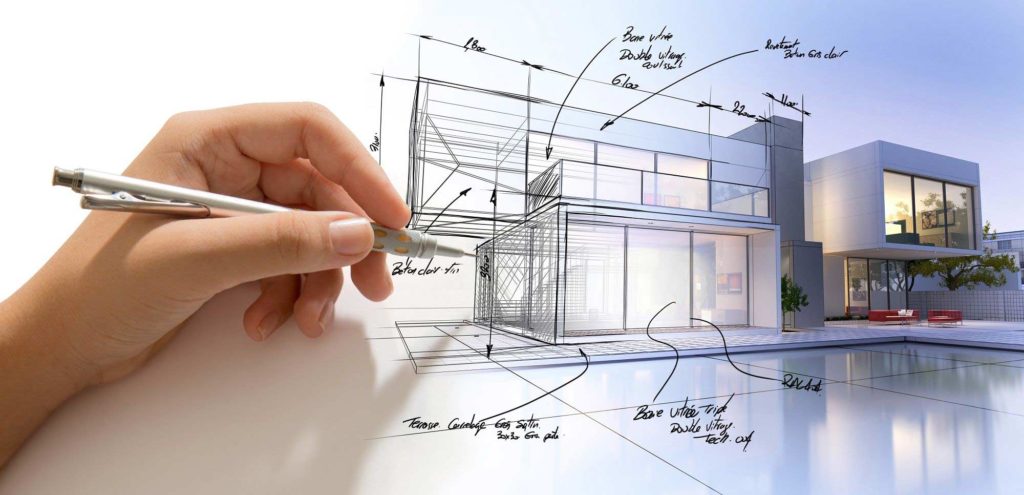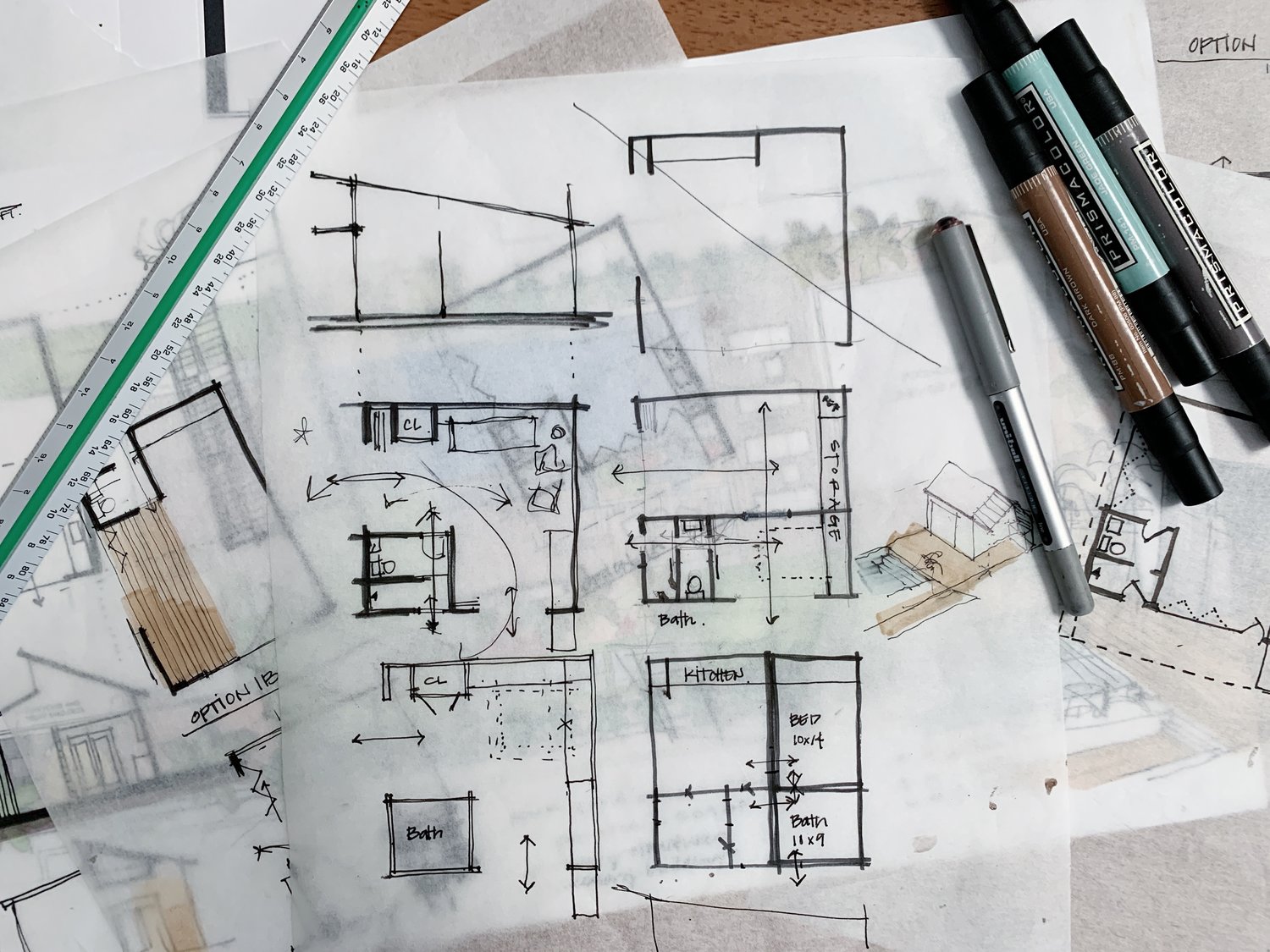Architect-Approved Home Remodeling Ideas
Architect-Approved Home Remodeling Ideas
Blog Article
Recognizing the Diverse Profession Paths Available for Aspiring Architect
As a hopeful Architect, you have a world of career paths waiting for you. Each course uses one-of-a-kind difficulties and chances to use your imagination and technical expertise. Whether you're drawn to standard style or the subtleties of lasting layout, there's a particular niche that straightens with your rate of interests. Understanding these diverse options can form your professional trip, but which direction will you select to discover first?
Traditional Design: Designing Structures and buildings
Conventional design concentrates on making buildings and structures that blend performance with aesthetic allure. Your designs can show cultural heritage, showcasing local customs while meeting modern-day needs.
You'll create abilities in preparing, model-making, and site analysis, enabling you to imagine and communicate your concepts efficiently. Involving with customers, you'll need to comprehend their vision and translate it into possible designs.
Moreover, developing codes and sustainability practices are essential in your job, guaranteeing your structures are secure and eco-friendly. As you expand in your career, you'll find opportunities in domestic, commercial, and even reconstruction tasks, each offering distinct obstacles. Embracing traditional architecture leads the way for a meeting career that admires the past while shaping the future.
Urban Planning: Forming Neighborhoods and Public Spaces
As a hopeful Architect, you can play an important duty as a city organizer, transforming just how areas connect and function. By using community involvement methods, you'll assure that residents have a voice fit their environment. And also, integrating sustainable style concepts will aid produce areas that not only meet today's requirements but additionally shield the future.
Duty of Urban Planners
While several might assume of architects as the single visionaries behind buildings, city organizers play a vital duty in forming the wider landscape of neighborhoods and public rooms. By collaborating with various stakeholders, you'll help make parks, transportation systems, and domestic areas that advertise social communication and availability. Your know-how in spatial layout and area characteristics permits you to envision future development while preserving social heritage.
Neighborhood Interaction Techniques
Reliable neighborhood interaction techniques are essential for city coordinators to ensure that the voices of locals are listened to and valued in the planning procedure. To cultivate purposeful dialogue, you should prioritize open forums and workshops where neighborhood participants can share their concepts and issues. Use surveys and social media sites to reach a wider audience, making certain diverse perspectives are consisted of. Working together with neighborhood companies can improve trust and help with deeper connections. It's crucial to offer clear information about proposed projects and decision-making processes, enabling locals to feel enlightened and empowered. By proactively incorporating and listening comments, you'll produce areas that reflect the neighborhood's needs, ultimately causing more lasting and successful metropolitan environments. Accept transparency and continuous discussion for lasting impact.
Sustainable Design Principles
When making metropolitan areas, integrating lasting design concepts is critical for developing atmospheres that grow both environmentally and socially. You ought to start by concentrating on power efficiency, making use of materials that minimize waste and advertise recycling. Consider integrating green spaces, like yards and parks, to enhance biodiversity and enhance air quality. Advertising walkability and public transportation can lessen dependence on automobiles, promoting a healthier community.
Designing with water preservation in mind is additionally key-- think regarding rain yards and absorptive surfaces to manage stormwater. Including neighborhood participants during the planning process warranties that the areas you develop satisfy their needs and urge social communication. By accepting these principles, you'll contribute to vivid, sustainable metropolitan landscapes that benefit everyone.

Landscape Design: Creating Sustainable Outside Atmospheres
As you check out landscape design, you'll discover essential style principles that produce practical and attractive exterior rooms. Sustainable techniques play an important function in ensuring these environments grow while lessening environmental effect. Plus, you'll locate a selection of profession chances that enable you to make a genuine distinction in how people communicate with nature.
Design Concepts in Landscape
Recognizing layout principles in landscape style is essential for producing sustainable outside settings that harmonize with nature. You'll require to consider components like scale, balance, and proportion to ensure your designs feel natural and inviting. Additionally, pay attention to seasonal changes, developing with materials that complement the surroundings year-round.
Sustainable Practices Introduction
Sustainable methods in landscape design not only focus on aesthetic appeals but likewise prioritize eco-friendly wellness and source conservation. You can design spaces that advertise dirt health, such as exercising and utilizing natural products permaculture concepts. Ultimately, these methods guarantee your layouts profit both individuals and the setting for years to come.
Profession Opportunities Expedition
With a strong foundation in sustainable methods, landscape style supplies a selection of profession courses that enable you to make a significant effect on the environment. You could work as a landscape developer, producing visually pleasing and practical outside rooms, or specialize in ecological remediation, assisting to revitalize broken environments. Urban planners frequently work together with landscape designers to produce environment-friendly areas in urban setups, boosting city livability. If you're enthusiastic regarding education, take into consideration ending up being a landscape design educator, motivating future generations. Furthermore, you might work with nonprofits concentrated on ecological sustainability or take part in research study to innovate new practices. Each course not just shapes lovely settings but likewise cultivates a much healthier world for future generations.
Sustainable Style: Concentrating on Eco-Friendly Practices
As you discover your career in architecture, accepting green techniques can set you apart in a competitive field. Lasting style concentrates on producing buildings that minimize environmental impact while boosting resident health. By including renewable products, energy-efficient systems, and lasting building strategies, you'll contribute to a greener future.
Begin by gaining knowledge of eco-friendly qualifications like LEED or BREEAM, which can strengthen your qualifications. Consider how all-natural light, ventilation, and thermal effectiveness can optimize style. Collaborate with designers and ecological professionals to innovate solutions that decrease waste and conserve resources.
Do not fail to remember the significance of neighborhood involvement-- engaging neighborhood stakeholders can influence layouts that balance with the environment. As customers significantly focus on directory sustainability, your knowledge in environmentally friendly techniques will not only bring in tasks yet additionally accomplish your interest for accountable style. Accept this crucial element of the profession, and enjoy your profession prosper.
Historic Preservation: Safeguarding and Restoring Cultural Heritage
While you begin on your architectural trip, think about the vital function of historical preservation in preserving our social heritage. This area concentrates on the defense and restoration of significant structures, websites, and frameworks that tell the stories of our past. By participating in historical conservation, you'll assist protect the architectural tradition that forms area identity.
As a historic preservation Architect, you'll evaluate historical relevance and evaluate the condition of structures. You'll work very closely with conservationists and chroniclers to guarantee authentic repair techniques are employed. This occupation path enables you to blend creative thinking with research study, allowing you to develop options that respect original products and workmanship.
Your job not just contributes to sustainability by recycling existing buildings however additionally cultivates a feeling of satisfaction within areas. Accepting this path will assist you become a guardian of history, preserving the tales and aesthetic appeals that enhance our lives.
Interior Style: Enhancing Indoor Spaces
Historical conservation and indoor style both share a commitment to enhancing the constructed setting, but they concentrate on various elements. While historic preservation emphasizes preserving a framework's historic and social value, interior design nos in you can try these out on enhancing interior rooms for capability and aesthetics.
As an aspiring Architect, you'll locate that indoor architecture allows you to blend imagination with technological abilities. You'll design spaces that not only look excellent however likewise promote convenience and efficiency. This area includes comprehending exactly how light, shade, and materials interact within a room, impacting state of mind and use.
You'll service different tasks, from property homes to business offices, making certain that each setting satisfies the demands of its passengers. By focusing on customer experience, you can change insides right into inspiring and functional spaces, making a significant effect on just how individuals connect with their environments. Embrace the chance to boost interior settings and shape the means people live and work.
Industrial Layout: Combining Capability With Appearances
Commercial style plays a crucial function in producing products that seamlessly mix aesthetics with performance, making sure that what you use day-to-day is not only aesthetically appealing but likewise useful. As an ambitious Architect, you could involve yourself in this field, concentrating on making every little thing from furnishings to customer electronic devices. Your job involves understanding user requirements, products, and producing procedures, enabling you to develop ingenious options that improve everyday experiences.
In industrial style, you'll usually team up with manufacturers, marketing experts, and engineers, making certain that your layouts are not only stunning yet likewise possible. You'll learn to balance kind and feature, prioritizing use without compromising design. By honing your skills in sketching, 3D modeling, and prototyping, you'll be well-equipped to bring your ideas to life. This job path offers a vibrant environment where creativity fulfills functionality, making it a rewarding option for architects curious about forming the items of tomorrow.
Frequently Asked Questions
What Educational Credentials Do I Need to Become an Architect?
To end up being an architect, you'll need a specialist level in architecture, normally a Bachelor's or Master's. Additionally, you'll need to finish an internship and pass the Architect Enrollment Evaluation to practice legitimately.
Exist Accreditation Needs for Various Building Job Paths?
Yes, there're qualification needs for various architectural courses. Architect. You'll need to pass examinations, total internships, and in some cases go after specialized training, depending on your picked focus, like landscape style, city design, or historical preservation
What Software Skills Are Crucial for Engineers Today?

How Can I Gain Practical Experience While Examining Design?
You can acquire functional experience by interning at building companies, joining layout competitors, volunteering for area jobs, or collaborating with schoolmates on real-world tasks. These possibilities improve your skills and build valuable connections in the industry.
What Task Opportunities Exist Outside Typical Architecture Firms?
You can check out numerous task chances outside typical architecture firms, like metropolitan preparation, interior decoration, landscape style, building and construction administration, realty advancement, and even functions in sustainability consulting. Each deals unique obstacles and incentives.
Whether you're attracted to typical style or the subtleties of lasting layout, there's a niche that straightens with your passions.When developing metropolitan spaces, incorporating sustainable design concepts is essential for creating atmospheres that thrive both ecologically and socially.As you discover landscape architecture, you'll uncover crucial style principles that develop stunning and functional outdoor spaces.Comprehending style concepts in landscape style is necessary for creating sustainable outdoor settings that balance with nature.In industrial style, you'll typically work together with designers, marketers, and makers, making sure that your designs are not just gorgeous however additionally practical.
Report this page